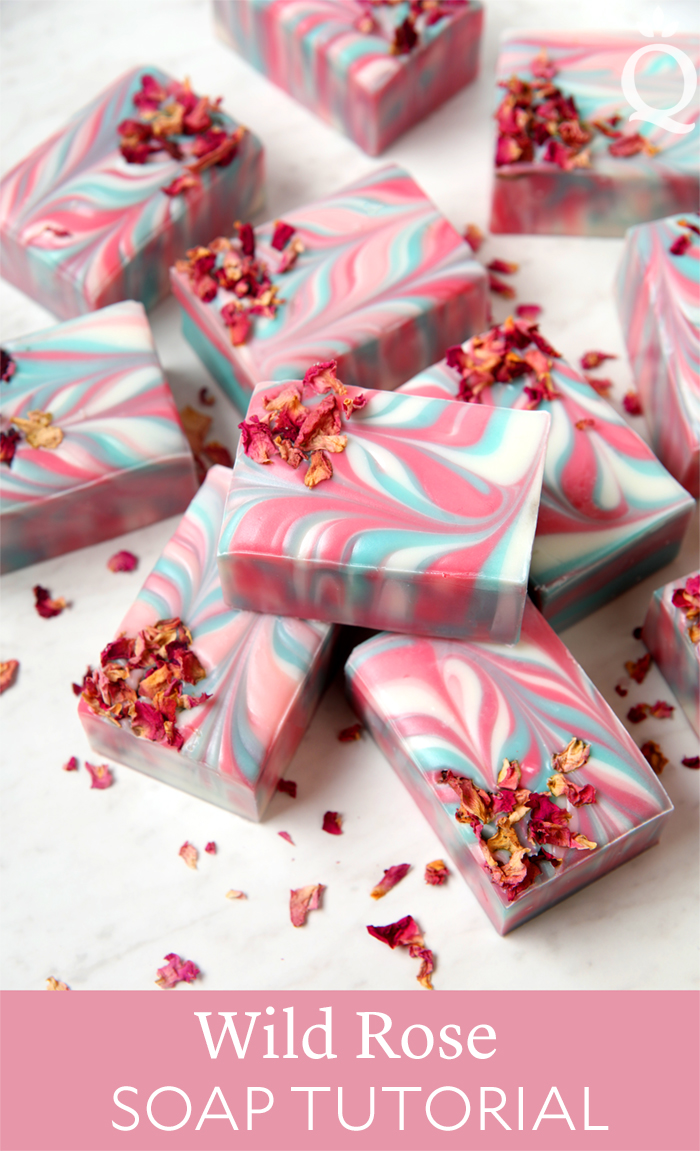
Floral fragrances are notorious for accelerating in cold process soap. This can make it tricky to use them in swirled designs, but it doesn’t make it impossible. These bars are scented with Wild Rose Fragrance Oil, which does accelerate. The key to combating the acceleration is working quickly, using plenty of slow-moving oils, and having a good understanding of trace.
The Wild Rose Fragrance Oil is part of our Modern Floral Collection, which includes four new scents, extracts, dried botanicals, and more. Click here to see all the new products.
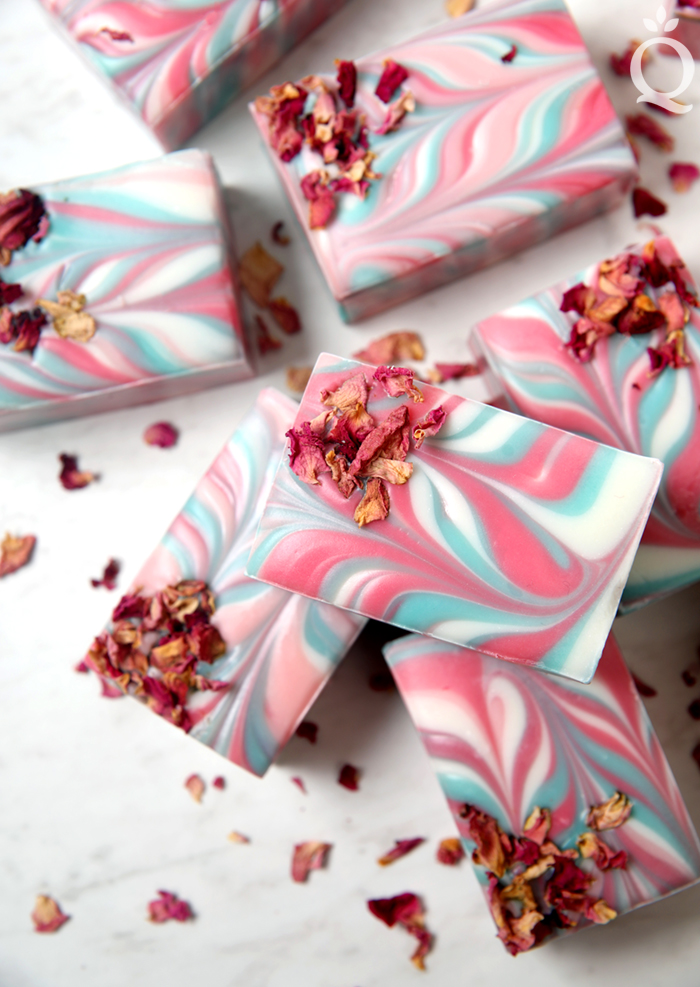
This design requires a thin to medium trace – you need time to pour the soap into the mold and swirl the colors together. Stick blending causes the soap to thicken more quickly, so use it very sparingly in this project. Use a whisk to mix in the colorants and add the fragrance oil right before pouring.
If you’ve never tried a swirled design like this before, you may want to attempt it with a non-accelerating fragrance oil. Baby’s Breath Fragrance Oil or Daisy Chain Fragrance Oil are great options.
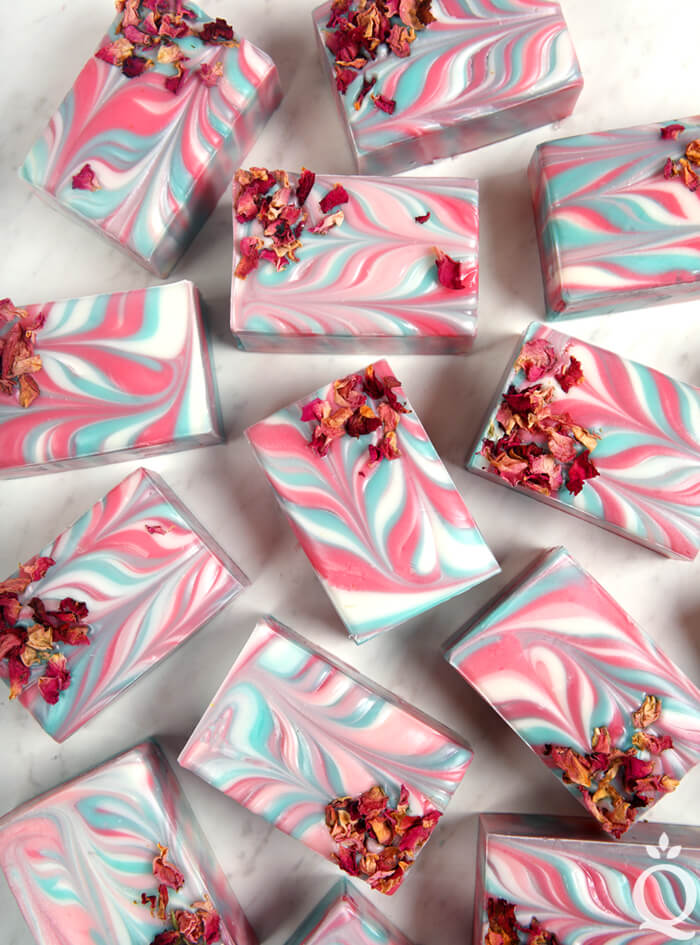
Wild Rose Cold Process Soap Tutorial
What You Need:
18 Bar Birchwood Mold
Silicone Liner for 18 Bar Mold
2 oz. Castor Oil (3%)
16.3 oz. Coconut Oil (25%)
20.8 oz. Olive Oil (32%)
13 oz. Palm Oil (20%)
6.5 oz. Sunflower Oil (10%)
6.5 oz. Sweet Almond Oil (10%)
9.1 oz. Sodium Hydroxide Lye
21.5 oz. Distilled Water
4 oz. Wild Rose Fragrance Oil
Rose Pearl Mica
Shamrock Green Mica
Titanium Dioxide
Pink Rose Petals
If you’ve never made cold process soap before, stop here. We highly recommend checking out our FREE four part SoapQueen.tv series on cold process soapmaking, especially the episode on lye safety. And if you’d rather do some reading, Bramble Berry carries a wide range of books on the topic, including Pure Soapmaking. You can also check out the digital downloads for that instant gratification factor.
FRAGRANCE PREP: Measure 4 ounces of Wild Rose Fragrance Oil into a small glass container and set aside.
COLORANT PREP: Disperse 2 teaspoons of the titanium dioxide into 2 tablespoons of sunflower or sweet almond oil (or any other liquid oil). Use a mini mixer to get rid of any clumps. In separate containers, mix 1 teaspoon of Shamrock Green into 1 tablespoon lightweight liquid oil. Finally, mix 1 teaspoon of Rose Pearl Mica into 1 tablespoon lightweight liquid oil. Use a mini mixer to get rid of any clumps. Have the pink rose petals nearby.
Optional: To ensure the titanium dioxide blends smoothly into the soap batter, we recommend micronizing it before dispersing it in oil. Use a coffee grinder to break up any clumps of color and prevent streaks of white from showing in the final soap. We like to use a coffee grinder that has a removable stainless steel mixing area for easy cleaning.
SAFETY FIRST: Suit up for safe handling practices. That means goggles, gloves, and long sleeves. Make sure kids, pets, other distractions, and tripping hazards are out of the house or don’t have access to your soaping space. Always soap in a well-ventilated area.
ONE: Slowly and carefully add 9.1 ounces of lye to 21.5 ounces of water and gently stir until the lye has fully dissolved and the liquid is clear. Set aside to cool. If you’d like a harder bar of soap that releases faster from the mold, you can add sodium lactate to the cooled lye water. Use 1 teaspoon of sodium lactate per pound of oils in the recipe. For this recipe, you’d add 4 teaspoons sodium lactate.
TWO: Melt and combine 2 ounces of castor oil, 16.3 ounces of coconut oil, 20.8 ounces of olive oil, 13 ounces of palm oil, 6.5 ounces of sunflower oil, and 6.5 ounces of sweet almond oil (remember to fully melt then mix your entire container of palm oil before portioning). Once the lye water and the oils have cooled to 130 degrees F or below (and are ideally within 10 degrees of each other), add the lye water to the oils and stick blend the mixture to a very thin trace.
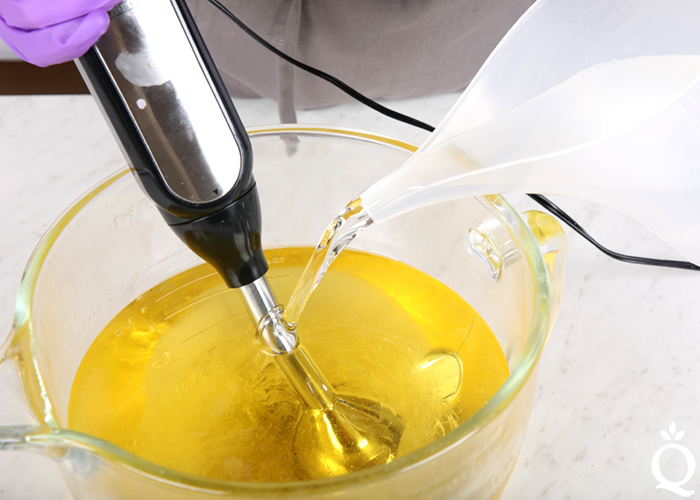
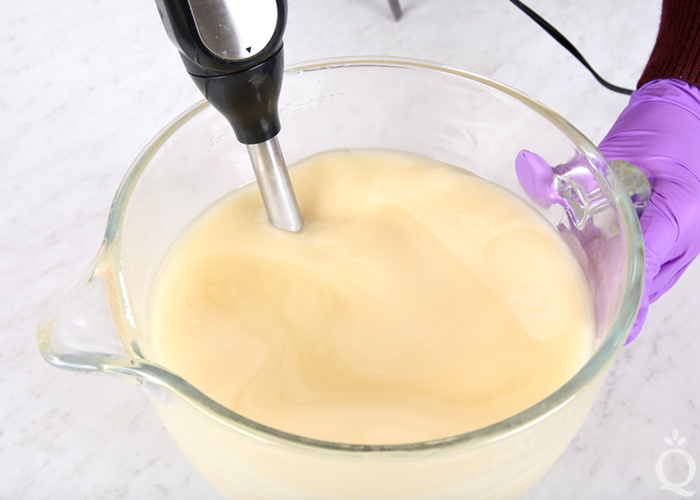 THREE: Split the soap into four equal containers – each one will hold about 700 mL. Add the following amounts of dispersed colorants to each container and use a whisk to fully incorporate.
THREE: Split the soap into four equal containers – each one will hold about 700 mL. Add the following amounts of dispersed colorants to each container and use a whisk to fully incorporate.
- Container A (white): 1 Tbsp. dispersed titanium dioxide
- Container B (light pink): 1 tsp. dispersed titanium dioxide + 1/2 tsp. dispersed Rose Pearl Mica
- Container C (pink): 2 tsp. dispersed Rose Pearl Mica
- Container D (green): 1 tsp. dispersed Shamrock Green Mica
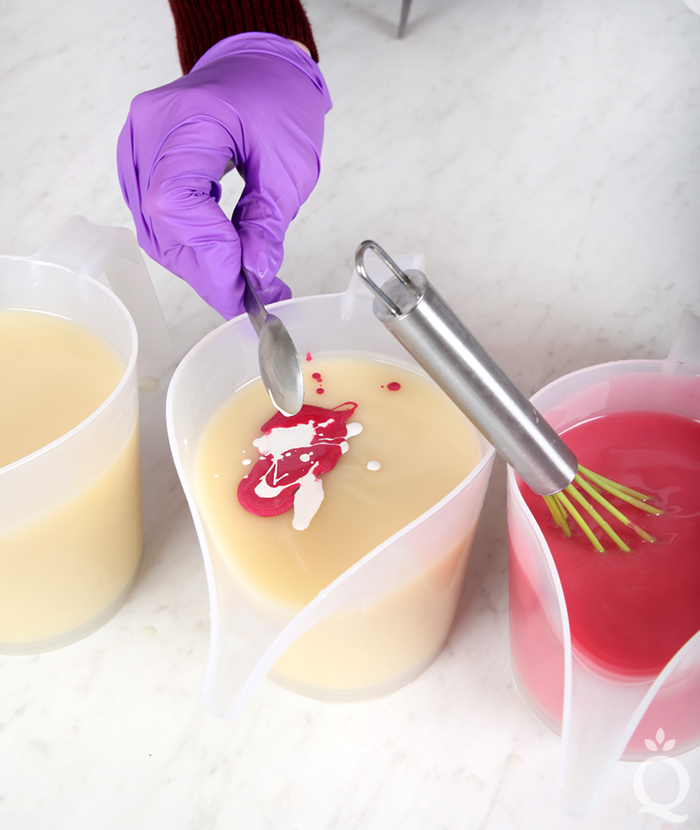
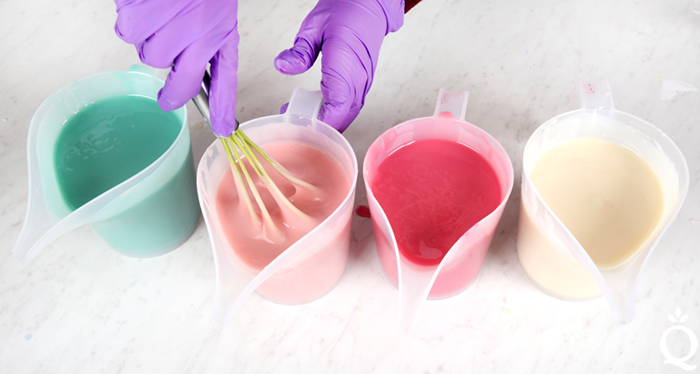 FOUR: Add the fragrance equally between each container (it’s okay to eyeball it) and use a whisk to fully mix in.
FOUR: Add the fragrance equally between each container (it’s okay to eyeball it) and use a whisk to fully mix in.
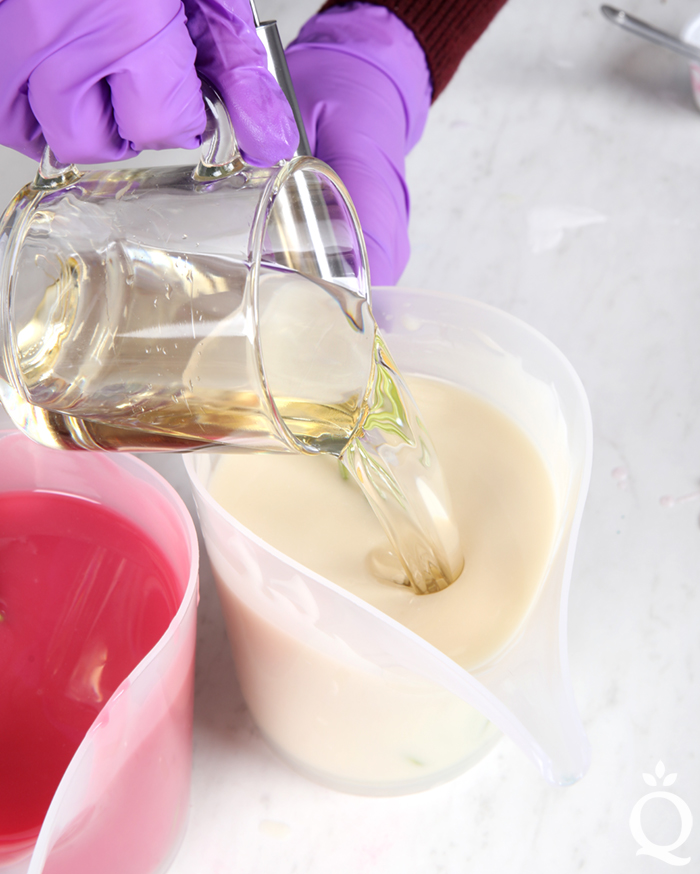 FIVE: Pour some of the first color (it doesn’t matter which) into the mold in long S-curves lengthwise. Pour some of a different color in the mold, still going lengthwise. Continue pouring alternate colors lengthwise into the mold.
FIVE: Pour some of the first color (it doesn’t matter which) into the mold in long S-curves lengthwise. Pour some of a different color in the mold, still going lengthwise. Continue pouring alternate colors lengthwise into the mold.
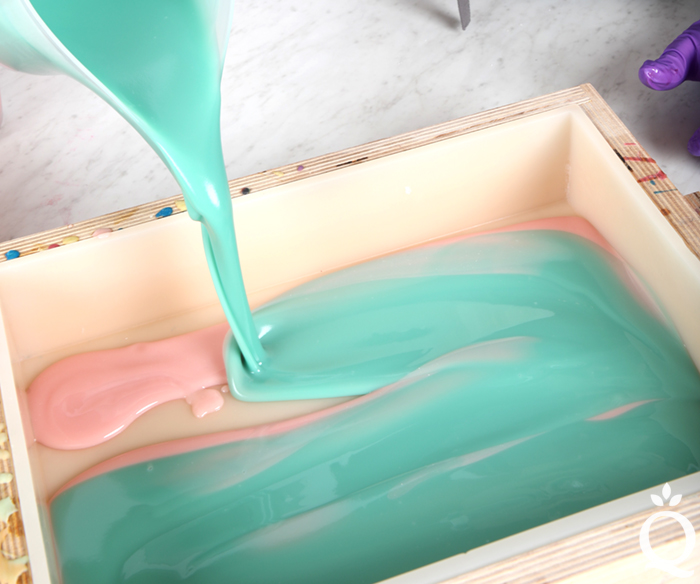
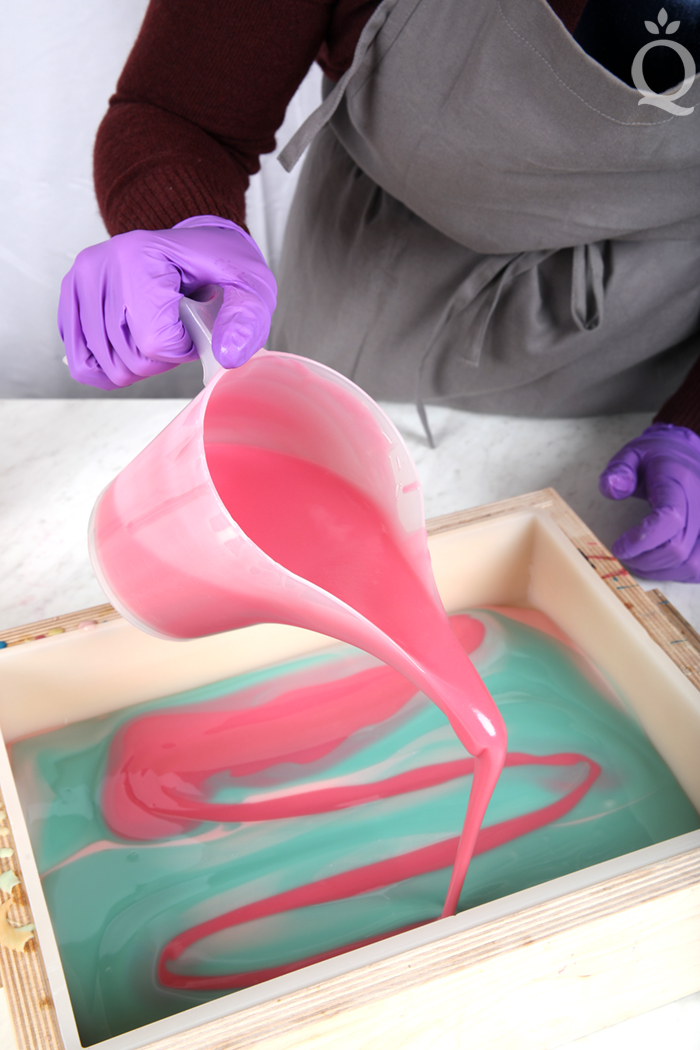 SIX: For the first few passes of color, the order doesn’t really matter. Once the mold is about halfway full, take more care to differentiate the colors to make a more distinct pattern when you swirl them. Once you get to the top of the soap, pour so that each color is showing.
SIX: For the first few passes of color, the order doesn’t really matter. Once the mold is about halfway full, take more care to differentiate the colors to make a more distinct pattern when you swirl them. Once you get to the top of the soap, pour so that each color is showing.
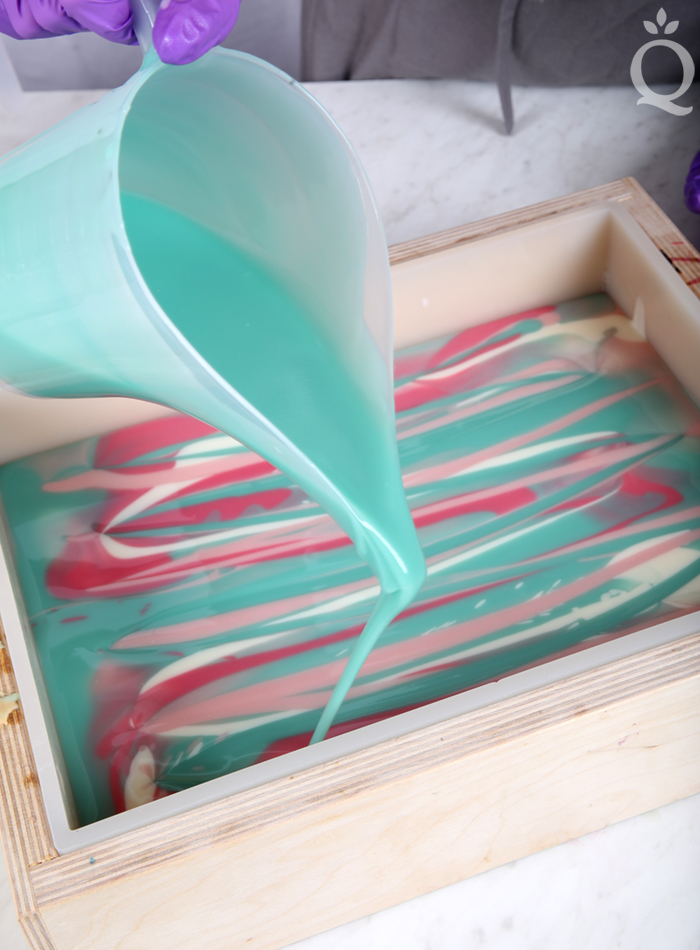 SEVEN: Once all the soap is in the mold, tap the mold firmly on the counter to get rid of bubbles. Insert a chopstick or dowel into the very top of the soap and drag the tool so that it crosses the lines created by the soap. Continue this S-curve pattern down the length of the mold until the entire soap has been swirled.
SEVEN: Once all the soap is in the mold, tap the mold firmly on the counter to get rid of bubbles. Insert a chopstick or dowel into the very top of the soap and drag the tool so that it crosses the lines created by the soap. Continue this S-curve pattern down the length of the mold until the entire soap has been swirled.
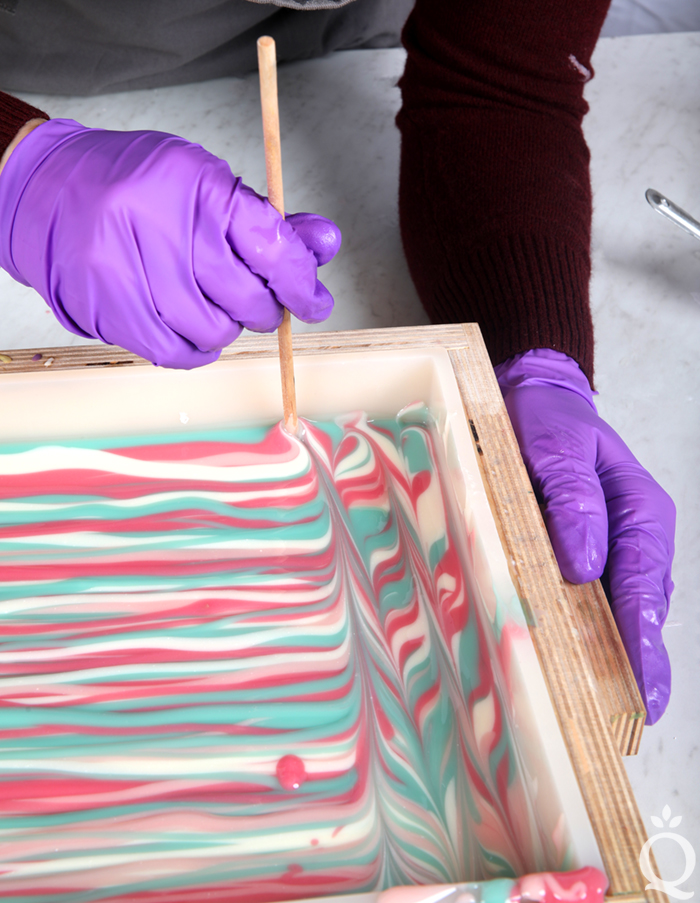
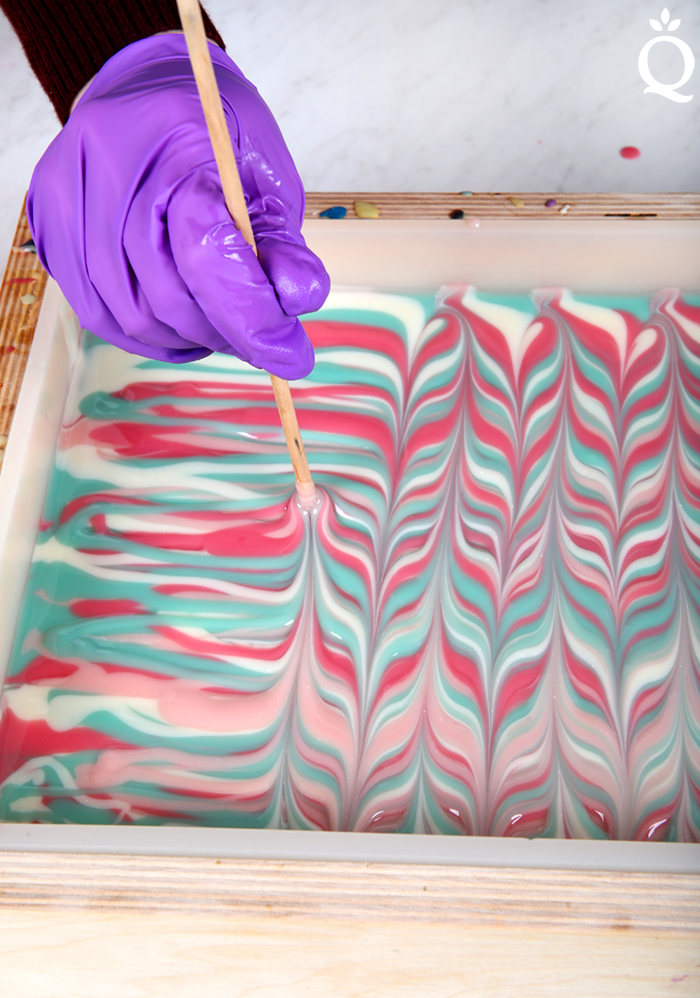 EIGHT: Insert the dividers into the soap so that the dividers reach the bottom of the mold in every section. This drags the design down the sides of the bars. If you prefer to cut your bars, you can skip this step.
EIGHT: Insert the dividers into the soap so that the dividers reach the bottom of the mold in every section. This drags the design down the sides of the bars. If you prefer to cut your bars, you can skip this step.
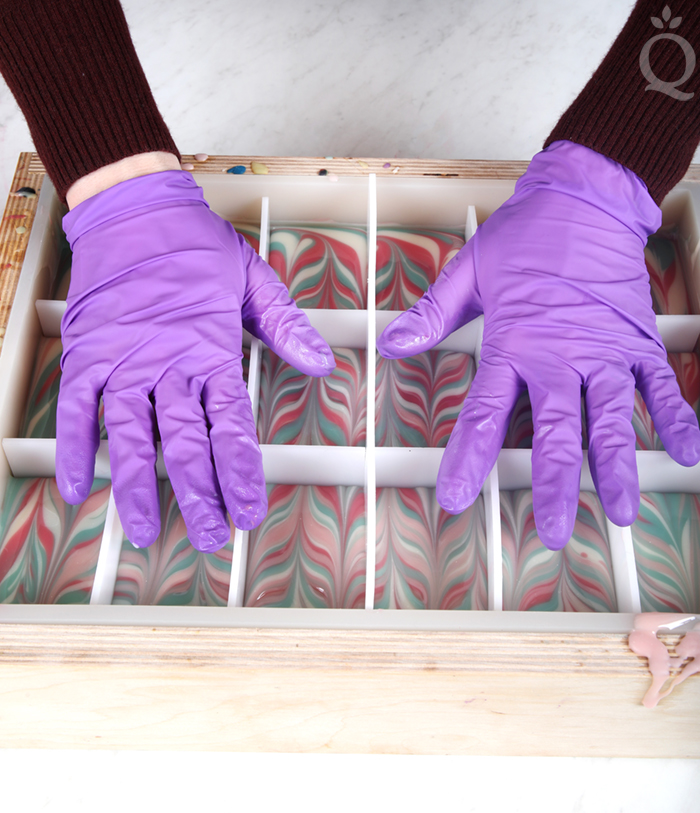 NINE: Sprinkle pink rose petals into one corner of each bar. With gloved hands, gently press the pink rose petals into the soap to help them stick. Spritz the top of the soap with 99% isopropyl alcohol to prevent soda ash. Cover the mold to insulate and promote gel phase. Gel phase helps the colors of this soap pop and it helps the bars release from the dividers faster and more easily. If you live in a very cold climate, place the mold on a heating pad set to medium for about 30 minutes to help raise the temperature and promote gel phase.
NINE: Sprinkle pink rose petals into one corner of each bar. With gloved hands, gently press the pink rose petals into the soap to help them stick. Spritz the top of the soap with 99% isopropyl alcohol to prevent soda ash. Cover the mold to insulate and promote gel phase. Gel phase helps the colors of this soap pop and it helps the bars release from the dividers faster and more easily. If you live in a very cold climate, place the mold on a heating pad set to medium for about 30 minutes to help raise the temperature and promote gel phase.
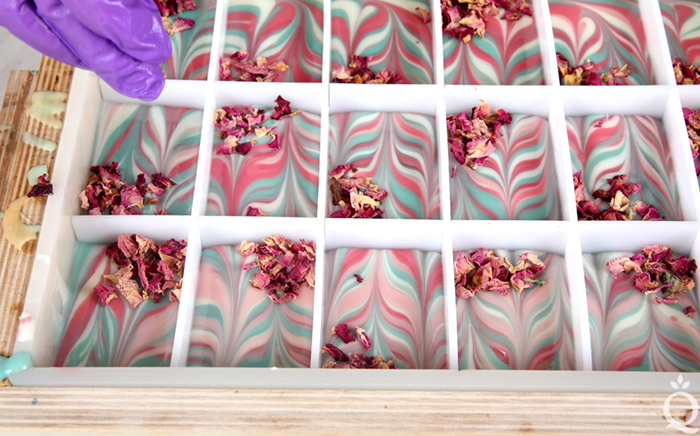 TEN: Allow the soap to stay in the mold for 2-3 days. To remove, pull the silicone mold out from the wood mold. Then pull away the sides of the silicone mold to break the airlock. Push the soap from the bottom to release. If the bottom of the soap is still quite soft, allow the soap to harden upside down in the dividers for one day.
TEN: Allow the soap to stay in the mold for 2-3 days. To remove, pull the silicone mold out from the wood mold. Then pull away the sides of the silicone mold to break the airlock. Push the soap from the bottom to release. If the bottom of the soap is still quite soft, allow the soap to harden upside down in the dividers for one day.
Once firm enough to handle, gently remove the soap from the dividers. To prevent tearing, do not pull the dividers. Push the soap down, or slide the dividers up or down to remove the soap without tearing. This video shows that process in more detail. Allow the soap to cure for 4-6 weeks, and enjoy.
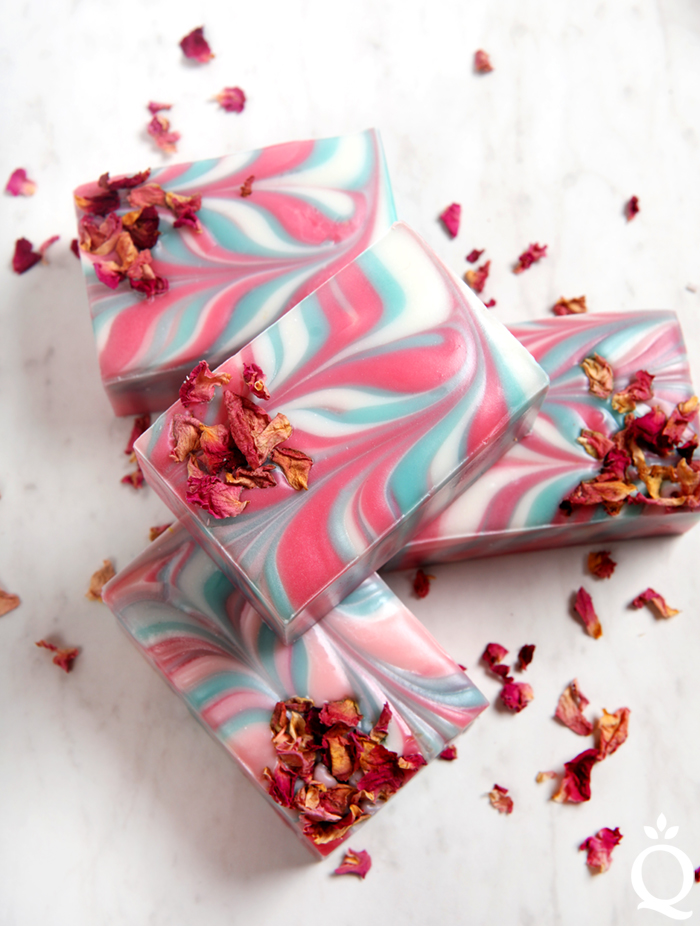
- 18 Bar Birchwood Mold
- Silicone Liner for 18 Bar Mold
- 2 oz. Castor Oil (3%)
- 16.3 oz. Coconut Oil (25%)
- 20.8 oz. Olive Oil (32%)
- 13 oz. Palm Oil (20%)
- 6.5 oz. Sunflower Oil (10%)
- 6.5 oz. Sweet Almond Oil (10%)
- 9.1 oz. Sodium Hydroxide Lye
- 21.5 oz. Distilled Water
- 4 oz. Wild Rose Fragrance Oil
- Rose Pearl Mica
- Shamrock Green Mica
- Titanium Dioxide
- Pink Rose Petals
- COLORANT PREP: Disperse 2 teaspoons of the titanium dioxide into 2 tablespoons of sunflower or sweet almond oil (or any other liquid oil). Use a mini mixer to get rid of any clumps. In separate containers, mix 1 teaspoon of Shamrock Green into 1 tablespoon lightweight liquid oil. Finally, mix 1 teaspoon of Rose Pearl Mica into 1 tablespoon lightweight liquid oil. Use a mini mixer to get rid of any clumps. Have the pink rose petals nearby. Optional: To ensure the titanium dioxide blends smoothly into the soap batter, we recommend micronizing it before dispersing it in oil. Use a coffee grinder to break up any clumps of color and prevent streaks of white from showing in the final soap. We like to use a coffee grinder that has a removable stainless steel mixing area for easy cleaning.
- Slowly and carefully add 9.1 ounces of lye to 21.5 ounces of water and gently stir until the lye has fully dissolved and the liquid is clear. Set aside to cool. If you’d like a harder bar of soap that releases faster from the mold, you can add sodium lactate to the cooled lye water. Use 1 teaspoon of sodium lactate per pound of oils in the recipe. For this recipe, you’d add 4 teaspoons sodium lactate.
- Melt and combine 2 ounces of castor oil, 16.3 ounces of coconut oil, 20.8 ounces of olive oil, 13 ounces of palm oil, 6.5 ounces of sunflower oil, and 6.5 ounces of sweet almond oil (remember to fully melt then mix your entire container of palm oil before portioning). Once the lye water and the oils have cooled to 130 degrees F or below (and are ideally within 10 degrees of each other), add the lye water to the oils and stick blend the mixture to a very thin trace.
- Split the soap into four equal containers – each one will hold about 700 mL. Add the following amounts of dispersed colorants to each container and use a whisk to fully incorporate.
Container A (white): 1 Tbsp. dispersed titanium dioxide
Container B (light pink): 1 tsp. dispersed titanium dioxide + ½ tsp. dispersed Rose Pearl Mica
Container C (pink): 2 tsp. dispersed Rose Pearl Mica
Container D (green): 1 tsp. dispersed Shamrock Green Mica - Add the fragrance equally between each container (it’s okay to eyeball it) and use a whisk to fully mix in.
- Pour some of the first color (it doesn’t matter which) into the mold in long S-curves lengthwise. Pour some of a different color in the mold, still going lengthwise. Continue pouring alternate colors lengthwise into the mold.
- For the first few passes of color, the order doesn’t really matter. Once the mold is about halfway full, take more care to differentiate the colors to make a more distinct pattern when you swirl them. Once you get to the top of the soap, pour so that each color is showing.
- Once all the soap is in the mold, tap the mold firmly on the counter to get rid of bubbles. Insert a chopstick or dowel into the very top of the soap and drag the tool so that it crosses the lines created by the soap. Continue this S-curve pattern down the length of the mold until the entire soap has been swirled.
- Insert the dividers into the soap so that the dividers reach the bottom of the mold in every section. This drags the design down the sides of the bars. If you prefer to cut your bars, you can skip this step.
- Sprinkle pink rose petals into one corner of each bar. With gloved hands, gently press the pink rose petals into the soap to help them stick. Spritz the top of the soap with 99% isopropyl alcohol to prevent soda ash. Cover the mold to insulate and promote gel phase. Gel phase helps the colors of this soap pop and it helps the bars release from the dividers faster and more easily. If you live in a very cold climate, place the mold on a heating pad set to medium for about 30 minutes to help raise the temperature and promote gel phase.
- Allow the soap to stay in the mold for 2-3 days. To remove, pull the silicone mold out from the wood mold. Then pull away the sides of the silicone mold to break the airlock. Push the soap from the bottom to release. If the bottom of the soap is still quite soft, allow the soap to harden upside down in the dividers for one day. Once firm enough to handle, gently remove the soap from the dividers. To prevent tearing, do not pull the dividers. Push the soap down, or slide the dividers up or down to remove the soap without tearing. Allow the soap to cure for 4-6 weeks, and enjoy.
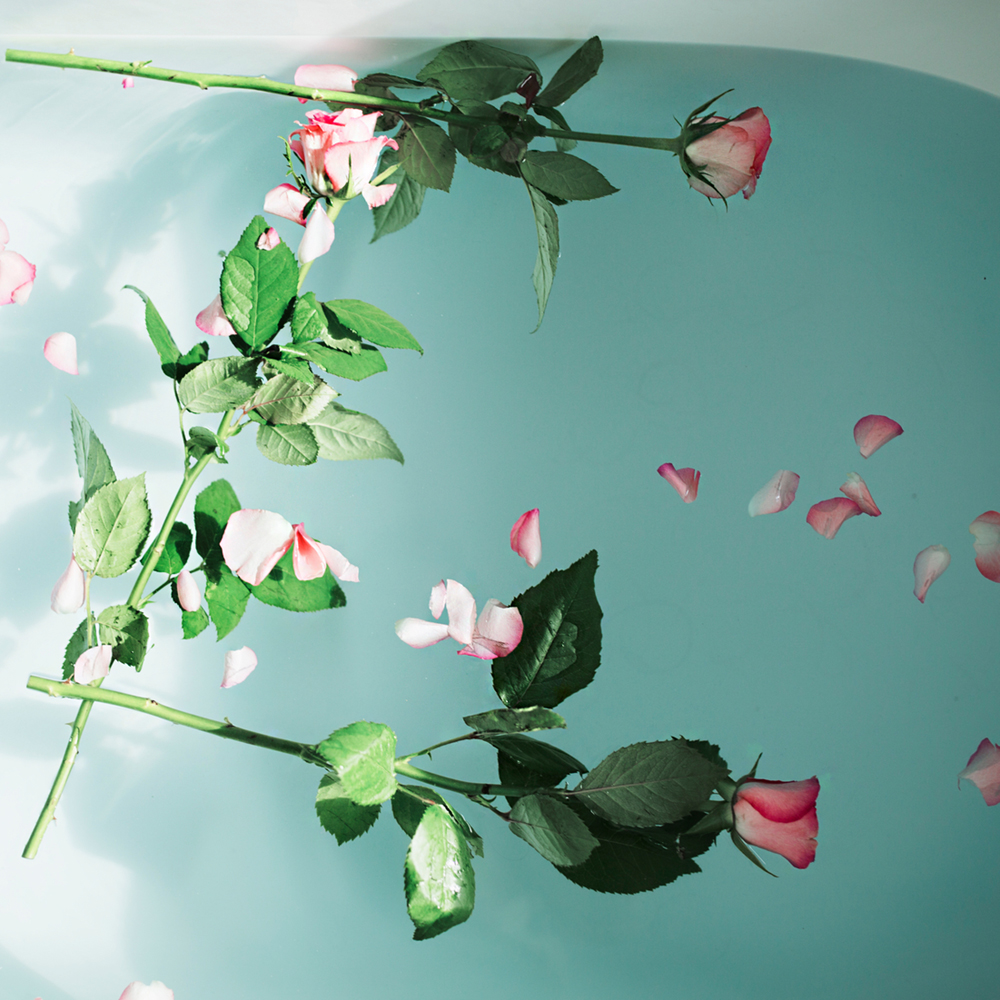


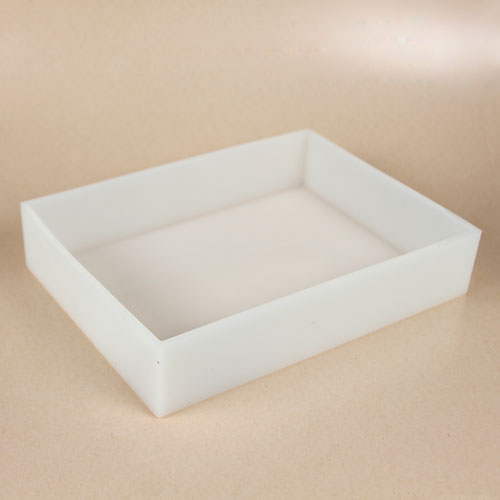

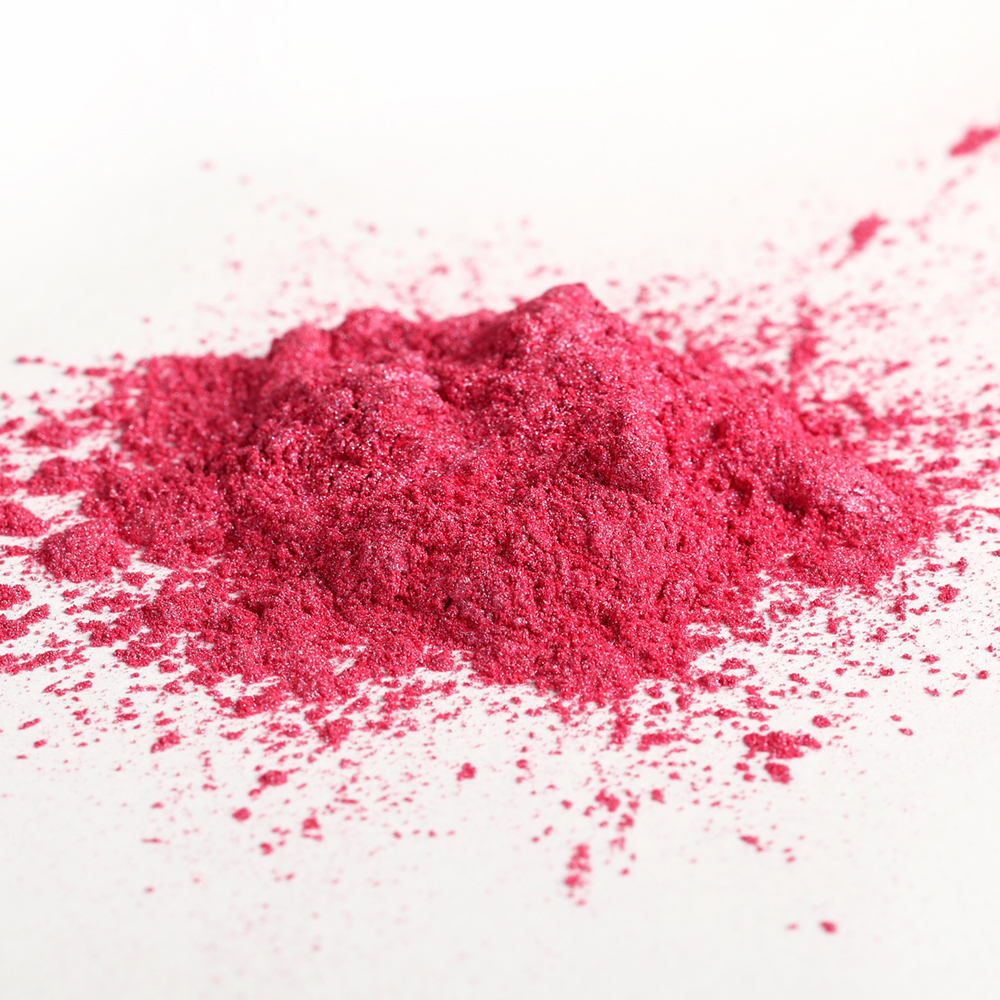

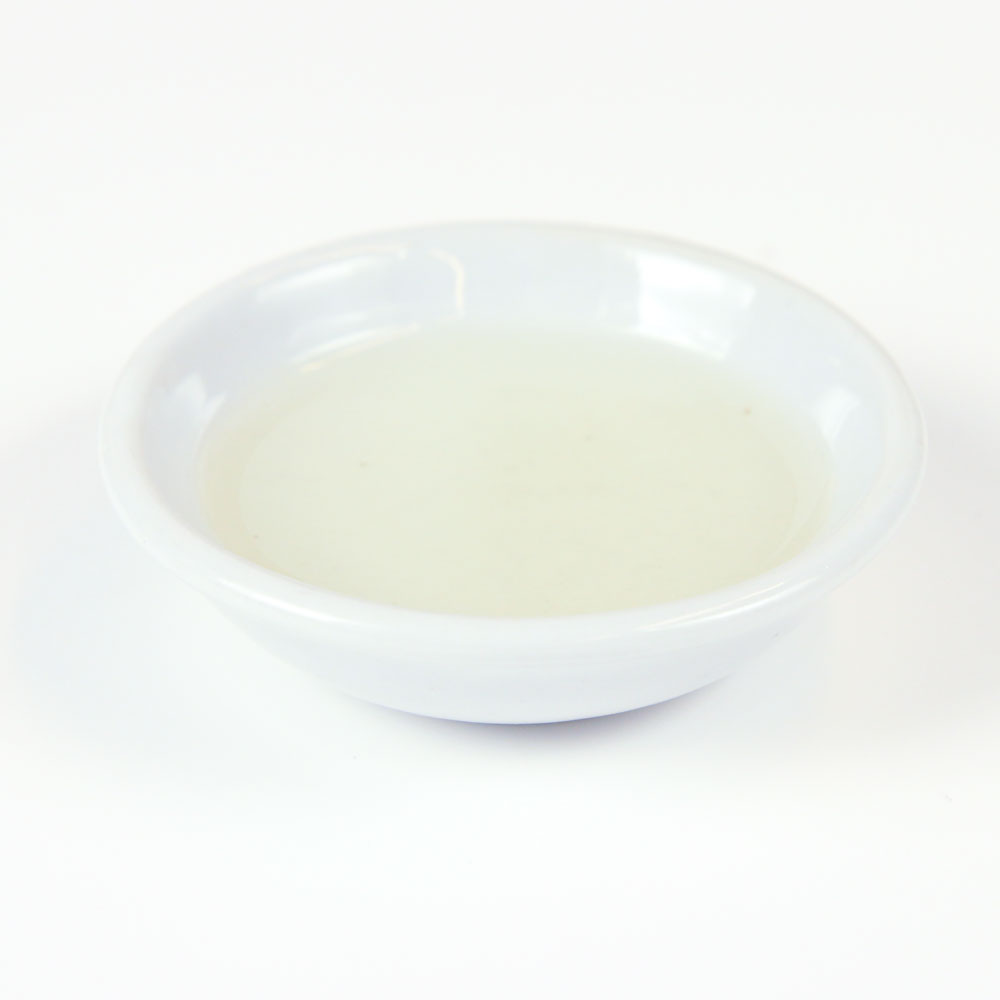
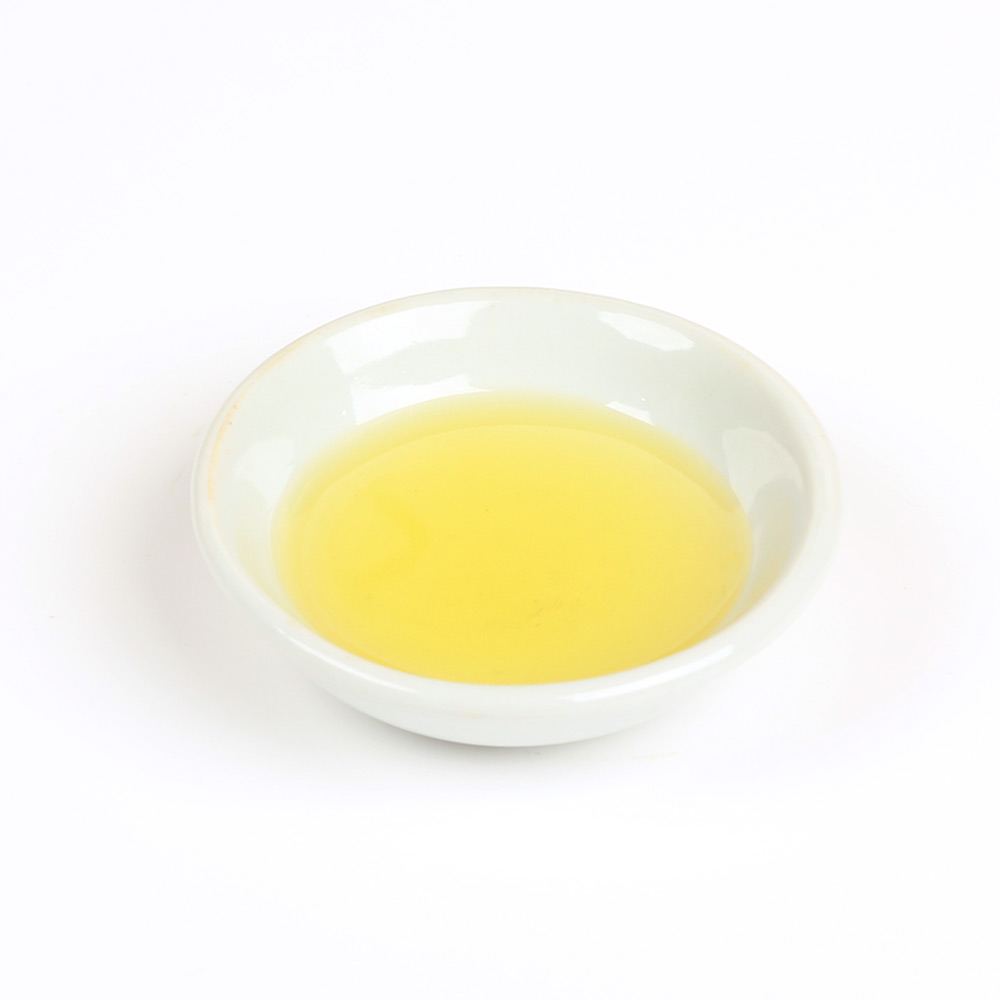
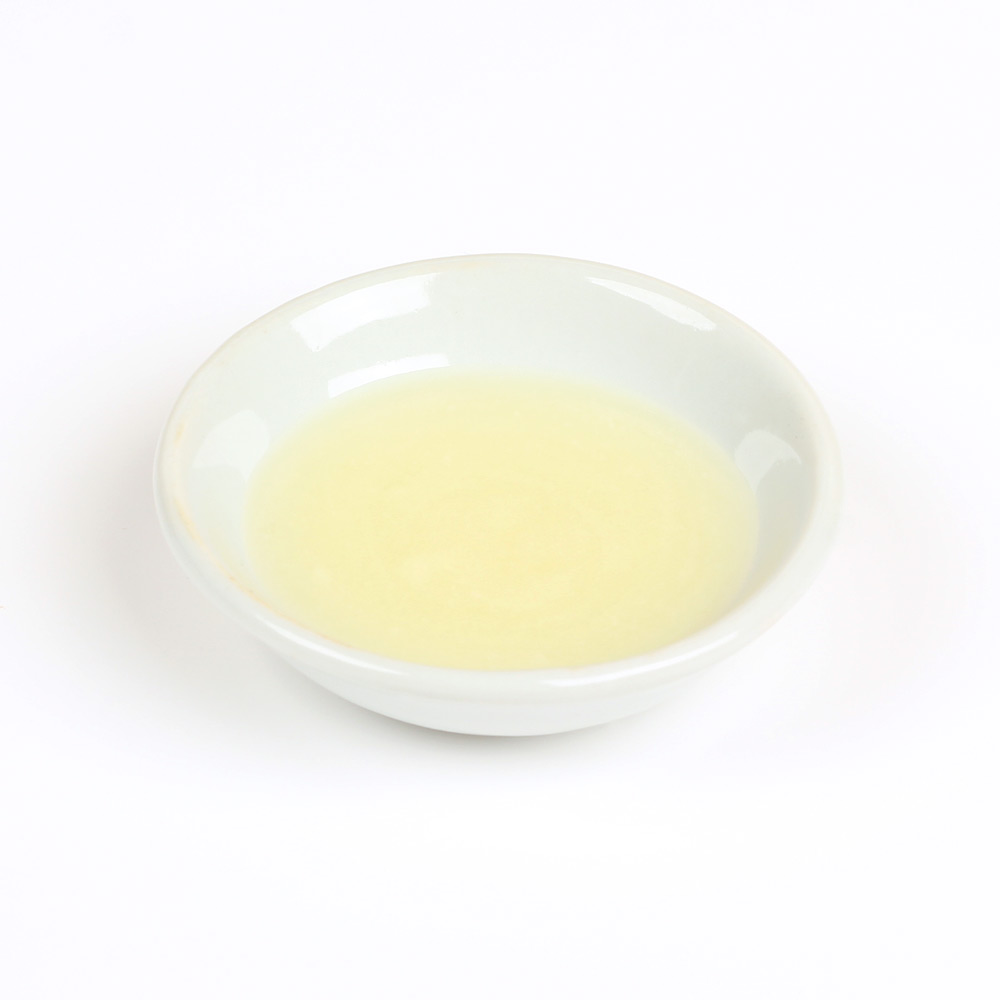


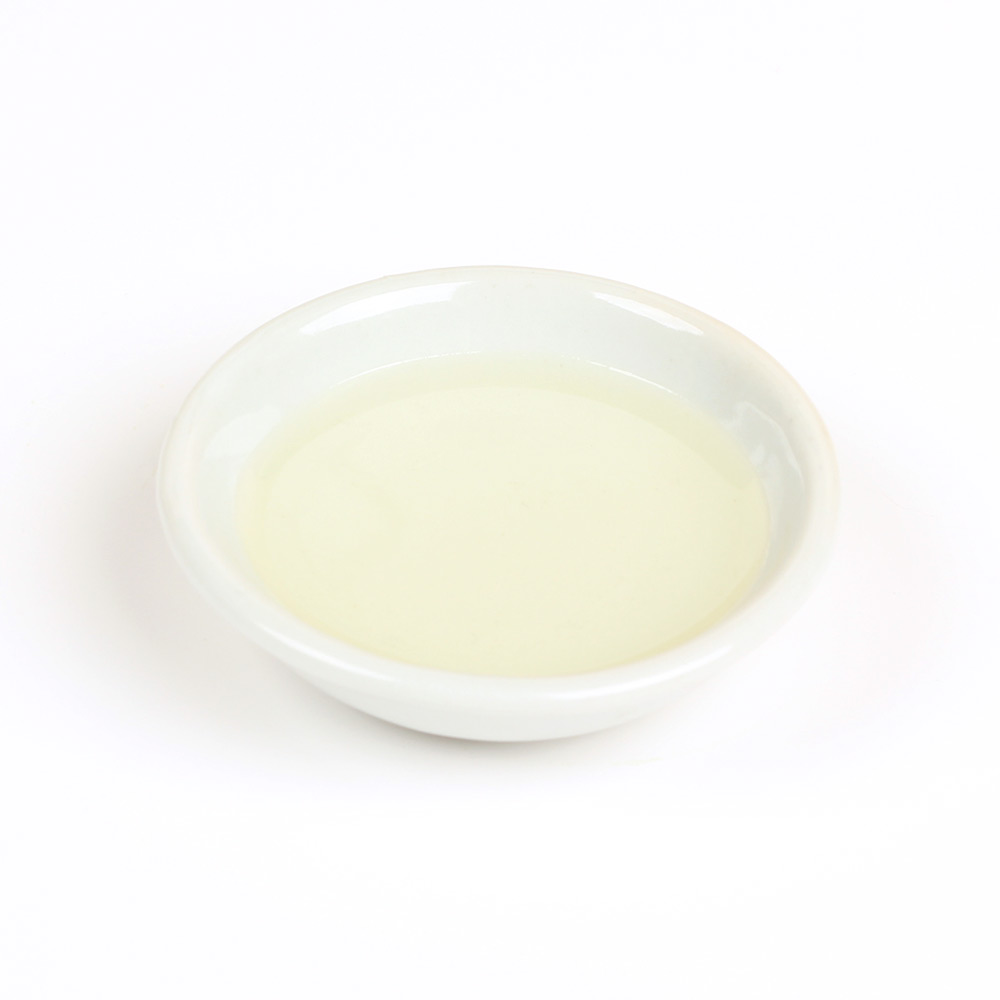
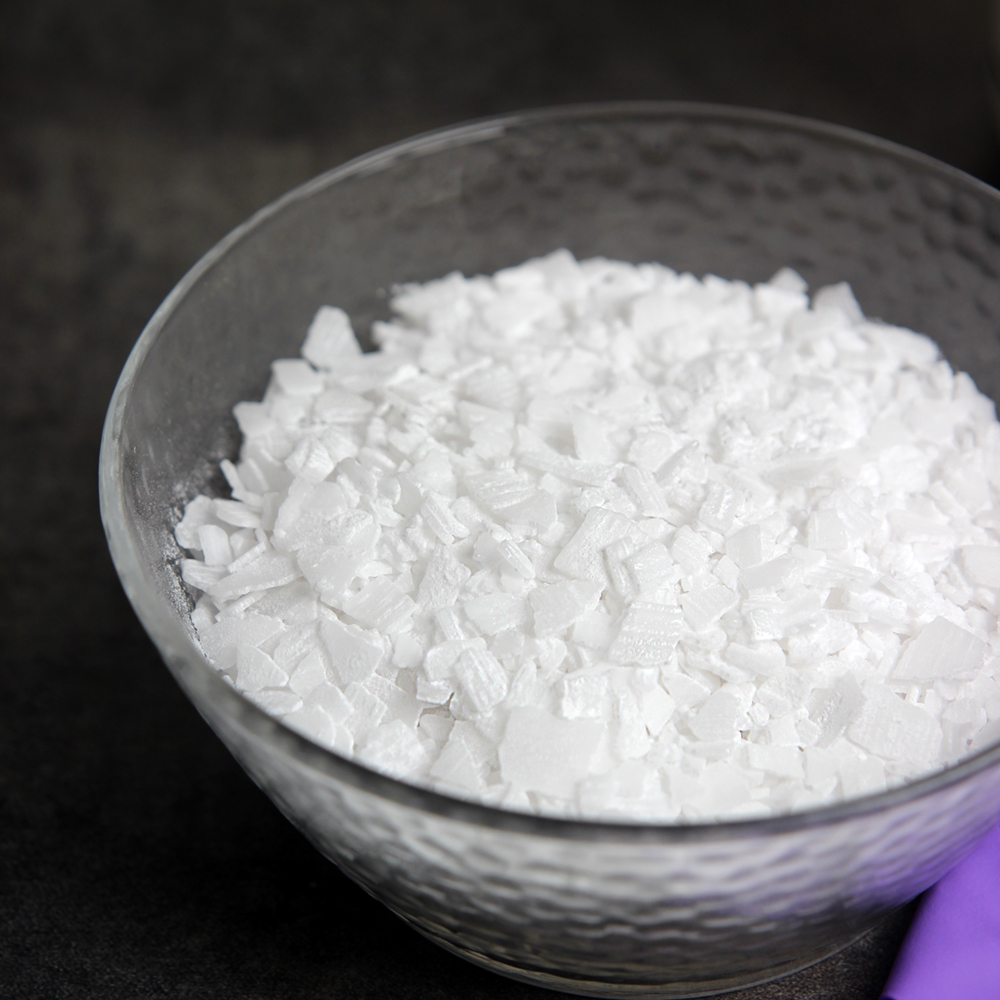
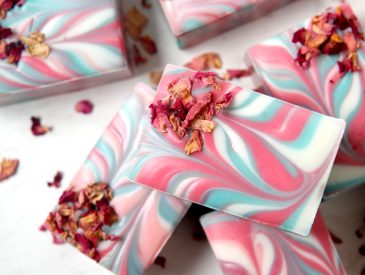

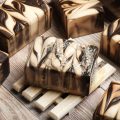
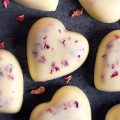
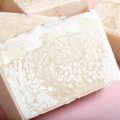
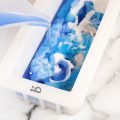
Hi! What is the difference between using micas and liquid colorants? Thanks!
Can I make this soap but omit the colorants? I want to try a rose scented soap but would like to simplify as I’m fairly new to soap making.
Sure! Plain soap is just as beautiful as colored soap is!
Hello a lot of clients are asking for palm free or vegan recipes. Any substitutes for this recipe?
Thank you.
This recipe is already vegan. As for palm free, you can use Babassu Oil, mango butter or cocoa butter. If you are replacing palm oil with a butter, you may want to up the coconut oil up to 33%. We recommend making a small test batch first to make sure your recipe is how you want it.
Here is another palm-free recipe: https://www.soapqueen.com/bath-and-body-tutorials/cold-process-soap/a-palm-free-in-the-pot-swirl/
We made this recipe a few days ago and un-molded today. I realized I forgot the sunflower oil. Will the recipe still work? It still feels very soft and almost like a clay texture. Anything I can do about it? Will it be okay if we just set it aside for 6 or so weeks? Is there anything else I should do to it other than just set it aside and forget about it? Otherwise looks amazing and the little bit we took off the mold that stuck lathered wonderfully. Thank you, Lynda
Without the sunflower oil, the soap may be lye heavy. You can check after 5 days to see if the pH is 9-10. Here’s how: https://www.soapqueen.com/bath-and-body-tutorials/tips-and-tricks/troubleshooting-lye-heavy-soap/
If the soap is around 9-10, it’s just fine to use. If it’s higher it is lye heavy and shouldn’t be used on the skin. You can use it for laundry soap though.
Finally got our ph strips in the mail and our soap is right at 10 so we are good to go. Thank you Kelsey. Can’t wait to use it.
Awesome, glad to hear that. Enjoy.
When I made this soap the rose pearl mica soap batter turned gray. It was gray as soon as I mixed the mica in. Any ideas why? I did substitute Shea butter for the palm oil but that was the only change.
Do you remember when you got the Rose Pearl Mica? We reformulated it in December 2017 to work in cold process soap, but before then it did morph.
It was probably right around that time. I received it in a mica sampler pack I’m pretty sure. I can order the new formulation and try again. Thanks!
You’re welcome. The good news is you can use that soap and it will feel great on the skin.
What a pretty soap! Thanks for another great tutorial. May I please ask how you keep the roses from turning black? Every time I’ve tried using roses on cp tops, they turn a dark brown or black and I have to take them off. I’ve had to plane the tops of one soap because of it. Please help. I used organic roses from my sister’s rose bushes so I know they didn’t have any chemicals sprayed on them to possibly react with the soap, if that helps at all to help me troubleshoot. Thank you for any advice you may be able to offer.
Natural items like dried flowers will turn brown and fall off, that’s normal. There’s nothing you can do to prevent it. If you’re not a fan, you can skip them – the soap will still look lovely without flowers. You can also top your soap with other options like jojoba beads or mica.
Micas: https://www.brambleberry.com/Micas-C46.aspx
Jojoba beads: https://www.brambleberry.com/Jojoba-Beads-C125.aspx
We dusted this soap with mica and pink sea salt: https://www.soapqueen.com/bath-and-body-tutorials/cold-process-soap/rose-quartz-cold-process-soap-tutorial/
Wow! Very easy to read and understand. You are indeed a soap queen. I love your explanations and I will try this soon. Thanks a lot for sharing this beautiful recipe, I love youuuu
Thanks for your sweet comment Sharry, it means a lot to us.
So very pretty!
Thanks Joan!
I thought shamrock turned grey in cp soap! :O My container says it will morph in the label.
The old version did morph in cold process soap. We brought in a reformulated version in November 2017. It’s a bit more teal and shimmery than the previous version, and it also performs well in cold process: https://www.brambleberry.com/Shamrock-Green-Mica-P3071.aspx
Gorgeous! I have really been enjoying all the fragrances in this collection, especially since so many do not accelerate. I just made one with this fragrance and I always swirl, so I was happy to see how workable it was. You’ve made some really gorgeous bars with it here!
Thank you Margaret! Your bars are beautiful too, love that deep purple and white combo.